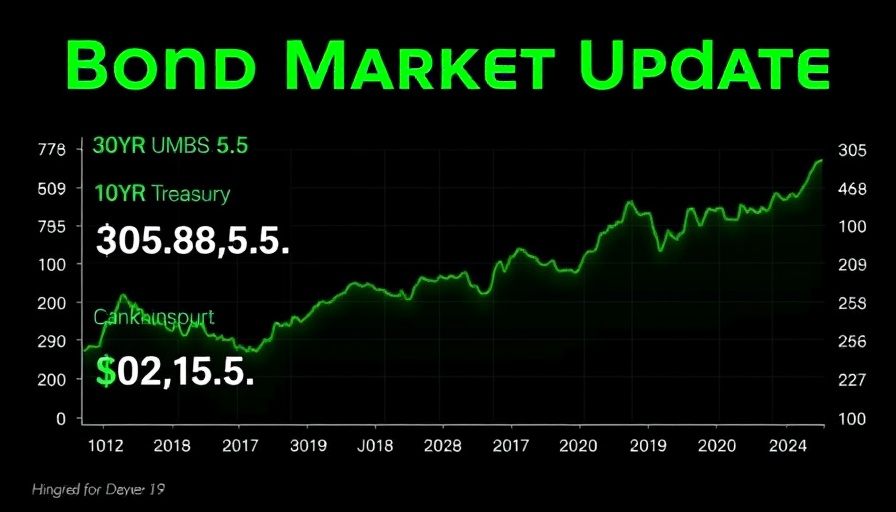
Understanding the Latest in Bond Markets
On August 12, 2025, the bond market experienced significant reactions following the CPI data release. Right at 8:30 AM, bonds rallied after the core CPI figures almost perfectly matched unrounded forecasts. The core CPI reported a change of 0.32% versus an expectation of 0.31%. More encouraging was the annual headline CPI of 2.7%, slightly better than the anticipated 2.8%. This data suggests that inflation trends could improve, at least on the surface.
The Mixed Messages of Inflation Data
Despite some good news, subsequent analysis revealed complexities worth noting. The 'yeah but' trading psychology emerged, presenting a mixed message from the data. Although declines in housing-related inflation may have positively influenced the overall numbers, other categories, especially supercore CPI, showed rising inflationary pressures. The supercore CPI—a measure of core services excluding housing—rose to 0.481 from a previous 0.212 month-over-month, highlighting these contrasting trends. Furthermore, the data reflected the highest annual core goods inflation since June 2023, driven partly by tariffs.
Market Reactions and Future Implications
In the immediate aftermath of the data release, a pattern unfolded. Initial bond rallies were followed by sell-offs, indicating a level of uncertainty in market sentiment. By 9:30 AM, the 10-year bond yield had risen slightly, reflecting a cautious approach following the initial excitement. As of 01:49 PM, MBS (Mortgage-Backed Securities) movements had stabilized, with modest improvements observed, but the post-CPI gains had largely been erased. This behavior in the bond market poses critical questions about future interest rate directions, making the upcoming jobs report pivotal for clarity.
Coping with Inflation as Investors
For everyday investors and mortgage holders, understanding these fluctuations—and their implications—can feel overwhelming. If you’re navigating loans or other financial services, be aware of how rising inflation and the resulting market dynamics might directly affect your monthly payments or borrowing capacity. Tracking these metrics can help you make informed financial decisions and potentially shield yourself against rising costs.
Looking Ahead: The Importance of Upcoming Economic Indicators
As we look toward the future, the next jobs report is of key importance for guiding the direction of interest rates. Labor market strength is a vital pillar that influences economic growth and inflation. Understanding these upcoming data points can help you better position yourself, whether you’re a homeowner, an investor, or someone looking to enter the market for the first time.
Conclusion: Staying Informed to Secure Financial Stability
Understanding bond market reactions and inflation trends doesn't just inform seasoned investors; it is crucial for anyone managing financial responsibilities. The interplay between CPI reports and bond yields is intricate, yet grasping these dynamics can empower you to make more strategic choices in your financial life.
 Add Row
Add Row  Add
Add 




Write A Comment